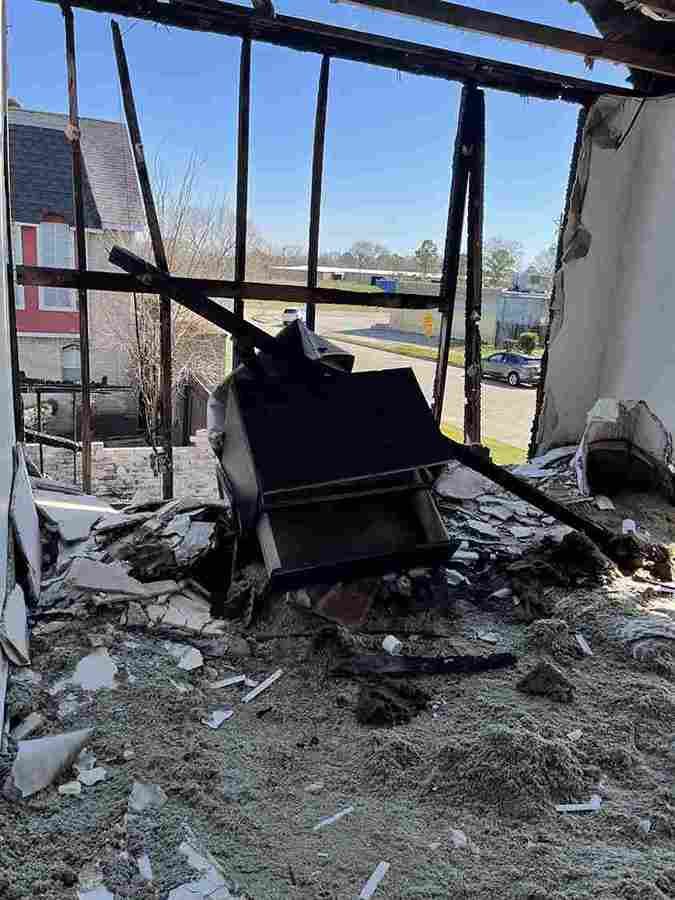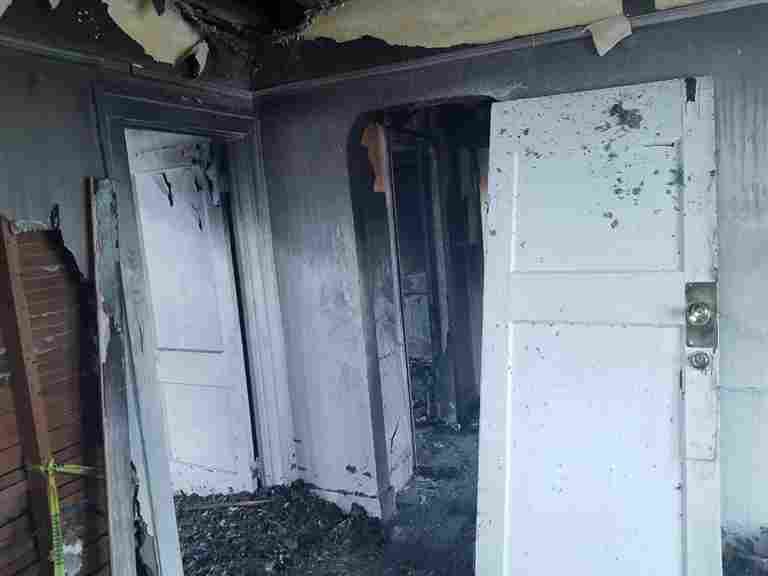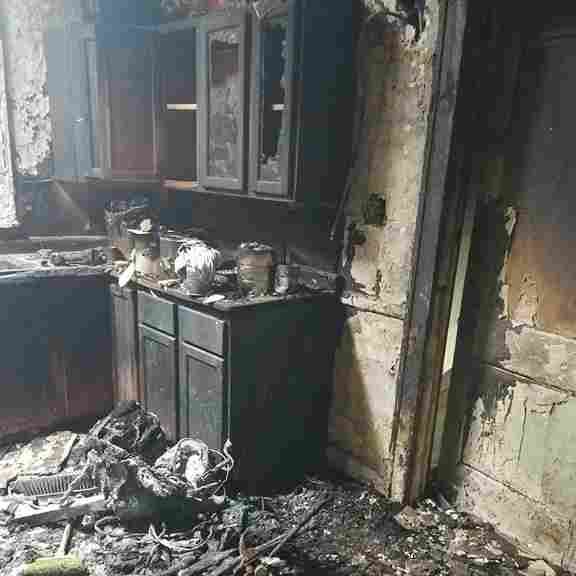Things That Can Be Salvaged After a Fire [Important]

Get Cash Offer
We will get back to you as soon as possible.
Please try again later.
It is a devastating experience to lose your home and possessions to a fire, including cherished items like important documents, electronics, family heirlooms, and irreplaceable photos. Once the fire department leaves and the fire damage is assessed, prioritizing your family's safety, finding shelter, caring for animals, and determining what can be salvaged after a house fire can be overwhelming. Don't forget the impact on vehicles, which might also need to be addressed.
Some items are obvious — they are burned beyond recognition, blackened, or melted by the intense heat and flames. But it isn't always easy to determine if other items, such as those in your fridge and freezer or your precious electronics, can be saved.
Here is what you need to know about what can be salvaged after a home fire.
What Can Be Salvaged After a House Fire?
Insurance companies often recommend hiring professional fire damage restoration companies after a fire occurs, even for small house fires, instead of trying to salvage items on your own. There may be hidden dangers from soot and smoke residue that have not been properly cleaned, such as those that may affect cosmetics or other personal care items.
This could pose health risks for anyone who isn't trained in proper cleanup methods for homes affected by fires. You will need professional fire damage cleanup and restoration services to get your home back to its previous state, including the restoration of any damaged vehicles. Always disclose a fire if anyone approaches you are interested in buying your house.
When you hire professionals, they will work with your insurance company to help cover the cost of restoring as much of your home as possible, if not your entire house, including power restoration.
What Can Be Saved?
The first thing to know is that there are two types of fire damage: wet and dry. Wet damage refers to anything that was damaged by water used to put out the fire. Dry damage is any content or structural damage caused by smoke particles, soot, or flames.
Water damaged items are at risk for mold growth if they are not properly dried within 48 hours. Mold can grow on virtually any surface when given the right conditions, and it is particularly fond of porous surfaces like wood, paper, and wallboard. Because of this, it is extremely important to promptly dry out wet items after a fire to prevent mold growth from fire fighting efforts. If you wish to have something professionally cleaned, such as heirlooms and important documents, contact your local [company name] as soon as possible.
Dry damaged items may or may not be salvageable depending on the extent of the damage and what type of materials were involved in the fire. For example, solid metals such as silver, gold, and brass can usually be cleaned and restored, while textiles such as clothing, furniture, and other personal items, especially items on the floor where residue may gather, may not be able to be repaired.

List of Things That Can Be Salvaged After a fire
Smoke damaged non-porous items:
Depending on how quickly the smoke was cleaned up, non-porous items like glass, metal, or even some first-aid tools may only need to be washed with oil soap, water, and possibly tri-sodium phosphate to remove any lingering toxins.
Textiles:
Burned clothing, curtains, and upholstered furniture can often be salvaged if they are quickly cleaned and deodorized with a commercial smoke removal product or washed in a washing machine, under the guidance of a doctor or professional cleaner, to eliminate toxins and contaminants.
Furniture:
Wood furniture can often be saved if it is treated with a commercial fire retardant and then properly cleaned and sealed. However, some furniture may be too damaged to save due to various issues such as structural conditions, exposure to extreme heat, or other factors related to the fire. In these categories of damage, it's best to consult a professional.
Household appliances:
Most appliances, like your refrigerator or air conditioning unit, can be salvaged if they are properly cleaned and deodorized. However, electrical wiring may need to be replaced if it is damaged in the fire. Be sure to inspect each appliance thoroughly and seek professional guidance from a doctor or technician if you are unsure about the condition of any items.
If you are not comfortable cleaning up the property yourself, it is best to hire a professional fire restoration company. They will have the experience, equipment, and resources necessary to properly clean damage, clean dangerous chemicals, and restore the property. They'll also have a dedicated team that knows how to handle various types of items, from fragile cups to heavy furniture pieces, utilizing specialized tools and processes.

What Items Can Survive House Fires
The following types of items may be salvageable after a house fire:
Porcelain and other non-porous materials:
Unfortunately, items like those made of ceramic, glass, or sand-based products have a strong chance of breaking if they are not moved properly or if there was too much heat damage from the fire. Even though they may not seem damaged, they will need to be tested for structural soundness before use during the cleanup process.
Iron and steel items:
These are extremely durable and usually able to survive through a fire as long as they do not have any plastic or rubber parts that could melt from flame damage.
Crystal glassware:
While crystal can withstand extreme heat because it's made of quartz, the most likely way it will break is during transport or cleaning after the fire rather than during the blaze itself.
Jewelry and precious metals:
Pure gold and silver don't burn or catch fire; however, the alloys used to make jewelry can melt at high temperatures and cause irreparable damage to your pieces. If they are undamaged by melted metal, they should be fine to clean up and keep in most cases. Metals may stain, but they usually can withstand significant fire damage. However, you can clean your metal items with baking soda, vinegar, and dish soap.
Clothing:
Much clothing can be saved if it's only been affected by smoke and soot. Most will need to be professionally cleaned and deodorized before being worn again.
Upholstery:
Upholstered furniture may also be salvageable with professional cleaning but curtains, bedding and most other soft goods are usually a total loss.
Stainless Steel Appliances:
These generally don't suffer much cosmetic damage but they must be professionally cleaned before use due to toxic fumes and the risk of electrical shock.
What Needs To Be Thrown Out After a Fire
Here's a list of kitchen food items you should throw away after a house fire:
Charred food:
- The heat from a fire can cause chemical changes to the food. The can may also be contaminated.
Open containers:
- Even if the contents of the sealed food look and smell okay, the opened containers may have been contaminated by smoke or water damage.
Bulging or rusting cans:
- This means that the seal is broken and the contents might be contaminated. However, heavy-duty cans that don't bulge are safe to keep. Make sure you clean them thoroughly before opening them.
Food with fire extinguisher dust on it:
- Any food that becomes coated in the dust from the fire extinguisher should be discarded because the chemicals from the extinguisher can make you sick. Be thorough when inspecting your kitchen for smoke, heat, water, and firefighting chemical damage.
Perishable food left at room temperature for too long:
- The USDA recommends that perishable and nonperishable food left at room temperature for over two hours (or one hour if temperatures are above 90 F) should be thrown away.
Boxed or Canned Foods Exposed To the Fire
- You should throw away any canned or boxed foods that were exposed to flames or smoke. This is especially true if they were opened or if they have soot stains or burn marks.
Anything you assume came into contact with contaminants:
- If any of your food comes into contact with floodwaters or ash and smoke, it should all be thrown away as well.

Can Appliances Be Salvaged After a Fire?
The answer depends on the type of appliance and the severity of the fire. Homeowners often assume that appliances are a total loss after a fire or smoke damage. The good news is that sometimes they can be saved.
Appliances most often salvageable after a fire:
Stoves and ovens.
Many appliances contain metal components that can withstand high heat and flames. Oven doors are made to protect the food inside from burning; they hold up well in fires.
Washing machines.
Washers are built to withstand high water pressure while spinning at high speeds; any residual smoke can be removed from their housings.
Dishwashers.
Dishwashers also use lots of water under pressure, which helps them survive fires without too much damage.
Refrigerators and freezers.
These appliances are usually salvageable if the electrical parts are not damaged by soot or water from the firefighting efforts.
It depends. If the plates and bowls were in an area of the home that was not directly affected by the fire, it may be safe to use them. The same is true if they were exposed to smoke but not flame. However, if they experienced direct contact with flames or extreme heat, they should be discarded as they may have been damaged beyond repair.
Can I Keep My Furniture After a Fire?
Some furniture can be salvaged after a fire, but it depends on the type of material used to manufacture the furniture. For example, leather furniture can usually be cleaned and restored after smoke or soot damage. Fabric upholstery can sometimes be cleaned as well, but if it was exposed to high heat or flames, it may need to be replaced. Hardwood furniture is harder to clean as soot will penetrate deep into the grain of the wood. In this case, you may need to have your furniture completely refinished by a professional in order for it to look new again.
WE CAN HELP WITH ANY SITUATION AND WE'RE READY TO GIVE YOU A FAIR CASH OFFER!
Enter Your Information Below it is Quick, Easy & Free!
Get Cash Offer
We will get back to you as soon as possible.
Please try again later.
Are Clothes Salvageable After a Fire?
Depends. If your clothes have soot and smoke damage, they may be able to be salvaged by dry-cleaning. If the fabric is not made of natural fibers, it will likely need to be taken to a specialty cleaner who specializes in smoke and soot removal. Professional care might even save towels and similar items.
Considering A Cash Offer For Your House As Is
When looking to sell your home after a fire and considering a cash offer for your house as-is, navigating the sale of a fire-damaged house can be a wise choice, especially if you have already sold all salvageable items. Fire damage can be overwhelming, and the process of dealing with insurance, repairs, and potential renovations can be daunting. Opting for a cash offer allows you to sell your property hassle-free after fire damage, without the need to invest time and resources in restoration. It also provides a convenient solution for homeowners who have already salvaged valuable items and are eager to move on quickly. Real estate investors and cash buyers specialize in buying properties in their current condition, including houses with smoke damage. Selling a house with smoke damage requires transparency and communication, and experienced professionals can help you navigate this process with ease. By considering a cash offer, you can expedite the selling process, alleviate stress, and focus on the next chapter in your life.
Are Canned Goods Safe After a Fire?
Food in cans or jars may look okay, but if it's been near a fire, it might not be safe to eat. Active food spoilage bacteria can be stimulated by heat from a fire. If the heat is too extreme, the cans or jars can split or rupture, which makes the food unsafe.
What To do With Belongings After a Fire
Smoke and soot can cause major damage to your personal belongings as well as your walls, ceilings, and hardwood floors.
Soot is a black powdery or flaky substance that forms when there is not enough oxygen for the fuel to burn completely.
Anything that wasn't ruined should be put in a safe place immediately, even if it means paying for a storage unit for a few months till you find a new home. Most household items the fire did not burn might just be ruined by smoke, soot, mold, or the water the firefighters used to put out the flames.

Most Important Salvageable Item
When your house catches on fire, it can be a devastating experience. However, not everything needs to be lost. There are some things that can be salvaged after a house fire, and there are some that can't. What matters most is you still have a life!
If you are considering selling your home because you don't want to repair it, contact us today.

Get Cash Offer
We will get back to you as soon as possible.
Please try again later.

Happy Customers



All Rights Reserved | Fire Cash Buyers


